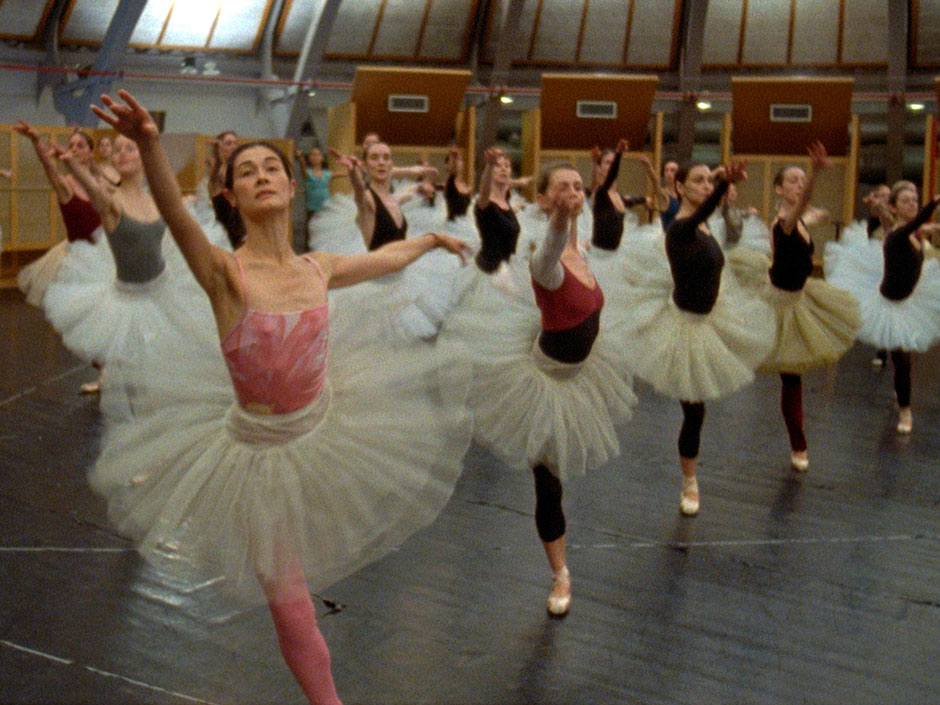Your take on Frederick Wiseman’s La Danse: The Paris Opera Ballet—a two-and-a-half hour documentary opening on November 4th at New York’s Film Forum—will depend on your feelings about ballet, about Wiseman, and about the Paris Opera Ballet itself.
I start at a disadvantage. The more I see of the company over the years, the less I like it. These are meticulously trained dancers—strong, focused, assertive, implacably correct—but to me they’re almost uniformly inexpressive. They show us how redoubtable their technique is, but they tell us almost nothing about the music, the choreography, or themselves. It’s an approach to dance that must begin in the Opera school, and it’s very evident in the classes and rehearsals the film presents: response to the music, what we call phrasing, is almost never questioned or considered. Correctness is all.
And then there’s the matter of repertory. Paris hasn’t had a master choreographer in modern times, unless you consider Serge Lifar a master (I don’t), and his ballets are dead as dodos—or doornails, if you prefer. Nureyev revitalized the company’s dancing, but he was not a talented dance-maker, and none of the other post-Lifar artistic directors have had even his pretentions in this area.
Without a vital creative tradition, then, and with that distressing compulsion of the French to be trendy (which in ballet today almost inevitably means trashy), the repertory is dismal. Wiseman shows us extended sequences from seven ballets. One is Nureyev’s unfortunate version of The Nutcracker. One is Pierre Lacotte’s reconstruction of Paquita. The rest is contempo-European: Mats Ek’s House of Bernarda Alba; Wayne McGregor’s Genus; Sasha Waltz’s Romeo and Juliet; Angelin Preljocaj’s Medea; a snatch of Pina Bausch’s Orpheus and Eurydice. Everyone rolls around on the floor in either sexual overload or sexual frustration. Or is violent. Preljocaj’s Medea hauls a tin bucket of “blood” onto the stage and smears her children and herself with it. (Why didn’t Euripedes think of that?)
Wiseman, at least to my eyes, doesn’t seem very interested in ballet itself. He’s interested in showing how an artistic institution functions. He’s also interested in beautiful but distracting arty photography. For instance, half a dozen panoramic shots of Paris taken at different time of the day and night and taken from the top of the Garnier opera house don’t add to our understanding of dance and dancers; they just get in the way. Wiseman in his travelogue mode—we got even more of it fifteen years ago in his very similar film Ballet, about A.B.T (the moon over the Acropolis, roller-coasters in Copenhagen’s Tivoli gardens, the New York skyline)—is a direct throwback to the travelogue shorts that turned up on double-bills together with the newsreel and the cartoon back in the 30s and 40s. (Those were boring too.) And wasn’t there anyone to tell him that material like this can’t maintain our interest for more than two and a half hours? Has he forgotten that his first and, arguably, most famous film—Titicut Follies (1967)—lasted less than ninety minutes?
Nor can I see what people eager to learn about a dance company are going to get from countless walks down corridors or workmen freshening up the paint or the old bee-keeper on the roof working his apiary. (It’s in Ballet that we get to see a young dancer drinking from a water fountain.)
A more fundamental problem stems from Wiseman’s pretentious decision not to name anything or explain anything. Perhaps if you’re new to ballet you don’t care what ballet you’re looking at or which dancers you’re seeing (although I don’t really believe that), but if you’re relatively knowledgeable, it’s maddening. I guess Wiseman is reaching for universality, and indeed, A.B.T. in the older film and the Paris Opera in this one turn out to be practically interchangeable, except that the American dancers seem younger, less businesslike, freer.
If you’ve never watched ballet classes or rehearsals—if you’ve never been backstage or in a studio—either of the Wiseman dance films may be a welcome if over-long revelation. For the rest of us, the revelations lie more in the fascinating dynamics between management and dancer, and in Paris, among management, unions, and government. We get to see Brigitte Lefevre dealing on a one-to-one basis with an experienced dancer voicing her concerns—it’s like watching two hard-headed French businesswomen negotiating a deal. (I guess that’s what it actually is.) And we see the company gathered together to discuss pension plans. First things first at the Paris Opera.
Advertisement
La Danse has the virtues of inclusivity, tact, and curiosity, and it testifies to the very rigorous and unglamorous way that dancers and coaches and choreographers and rehearsal pianists (and stage hands, and electricians, and wig-makers, and administrators) go about their business. And Wiseman’s fluent camera and pictorial eye make for a very pretty film. But it’s also highly self-indulgent, which means that it’s also something of a drag—and that’s something ballet should never be.



